One of Bristol’s most-loved parks is the stunning Ashton Court Estate, which covers 850 acres. It's known for its gorgeous landscape, intriguing mansion, variety of wildlife and huge amounts of green space.
Located in Long Ashton, it’s the perfect place for anyone keen to spot some wildlife on a walk.
The mansion and its owners
Since 1959, the park and the mansion have been owned by Bristol City Council, but they have been the property of many different owners over the years.
The mansion you see today, which is a Grade I listed building, has a 14th to 15th century core. It comprises a combination of different architectural styles, due to constant remodelling and additions made by the different owners. This mix of styles certainly gives the house a unique look.
You may notice on the south face of the mansion that, although the left and the right sides look similar, they are not symmetrical. The left side was built in the 17th century, and the right side, which is shorter and has larger windows, was built in the 19th century.

Image - Ashton Court Mansion. © Bristol City Council
The owners of Ashton Court Estate
Ashton Court is mentioned in the Domesday book, created in 1086, which says that it was an estate with a manor house.
Between the 14th and the 15th centuries, Ashton Court had a variety of owners, including Thomas de Lyons and the Choke family. Sir Giles Daubeney purchased the estate from King Henry VII in 1506.
In 1545, John Smyth gained ownership of the estate. Smyth was a Bristol merchant, and the Ashton Court Estate remained in the Smyth family for just over 400 years.
Thomas Smyth
A descendant of John, Thomas Smyth, made some changes to the mansion. He added a new southern front, which was in the style of the famous English Architect Inigo Jones. Jones was the first English architect credited with introducing the architecture of both the Roman classical period and the Italian Renaissance to England. It was suspected that Inigo made these changes; however, this was not confirmed, and historians are very doubtful that it was.
Thomas Smyth was a royalist, supporting the King in the English Civil War. He died in 1642 in Cardiff whilst serving with a royalist garrison.
Thomas was succeeded by his son Hugh, who became the first baronet of Ashton Court in May 1661. This was a title that was given in the restoration period, when Charles II brought back the monarchy, due to the Smyth family’s loyalty.
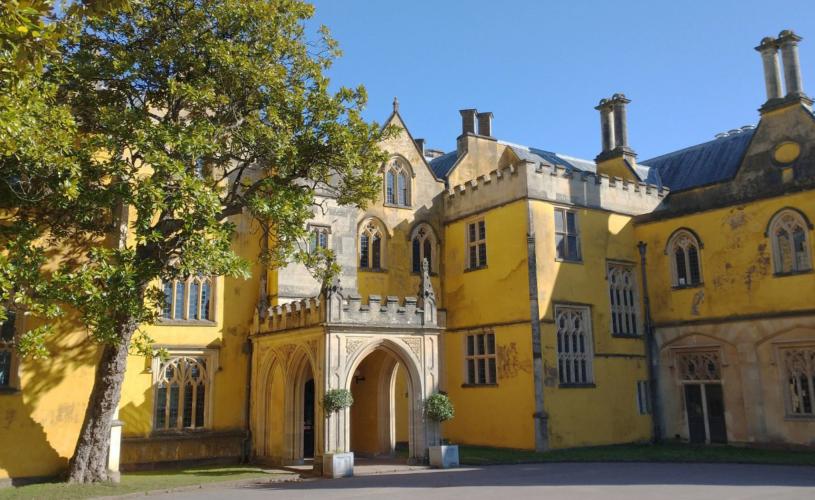
Image - Ashton Court Mansion. © Bristol City Council
Sir John Hugh Smyth
In 1783, Sir John Hugh Smyth inherited the estate. He had married Elizabeth Woolnough in 1757, who was a wealthy heiress with a sugar plantation in Jamaica that relied on the labour of enslaved African people.
John Hugh Smyth had Humphrey Repton, an English landscape designer, draft a plan for work on the east front of the mansion. Despite John’s death in 1802, Humphrey’s plans were used by Sir Hugh Smyth, John’s heir and nephew, although his plans were altered.
Sir Greville Smyth
Further changes were made to the mansion by Greville Smyth. 16-year-old Greville inherited the estate in 1852, although his uncle acted as the estate’s steward until he came of age in 1857.
Major Charles Edward Davis was one architect whom Sir Greville employed to make changes, which included converting the stables into a museum and adding an indoor winter garden in the central courtyard. This garden held different tropical plants and ferns, but sadly, it was demolished and is not part of the mansion today.
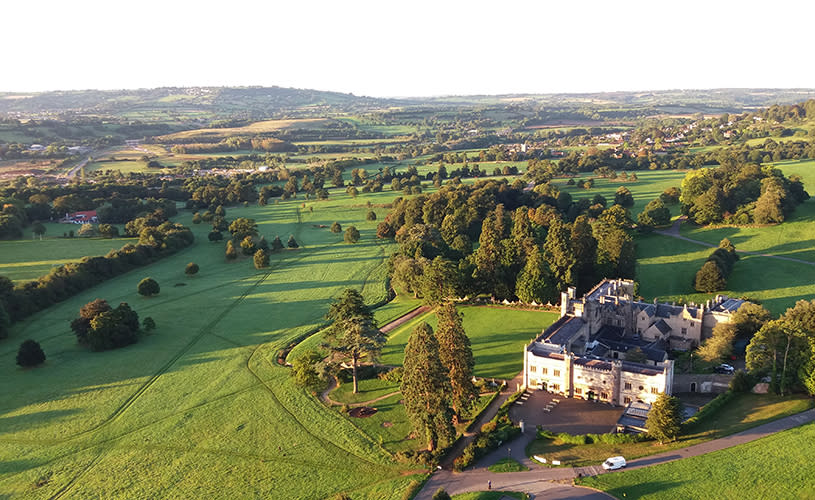
Image - Aerial view of Ashton Court Estate
The end of the Smyths at Ashton Court
Between the period 1914 to 1946, the mansion was owned by Gilbert and Esme Smyth. During this time, the estate played a role in both World Wars of the 20th century. In World War I, it was used as a military hospital and housed many patients, including a young C.S Lewis, the author of The Chronicles of Narnia. In World War II, the estate was an army transit camp.
Esme outlived her husband, who passed away in 1940, and died in 1946. In 1959, Ashton Court Estate was sold to Bristol City Council. Unfortunately, the mansion was in poor condition by this time.
Today, the mansion is run by Artspace Lifespace. Check out their website to find out more information about the estate today.
The ArtSpace Lifespace offers the Great Hall of the mansion as a filming location, and the estate and park have been used for the filming of popular shows like Sherlock and Boarders.
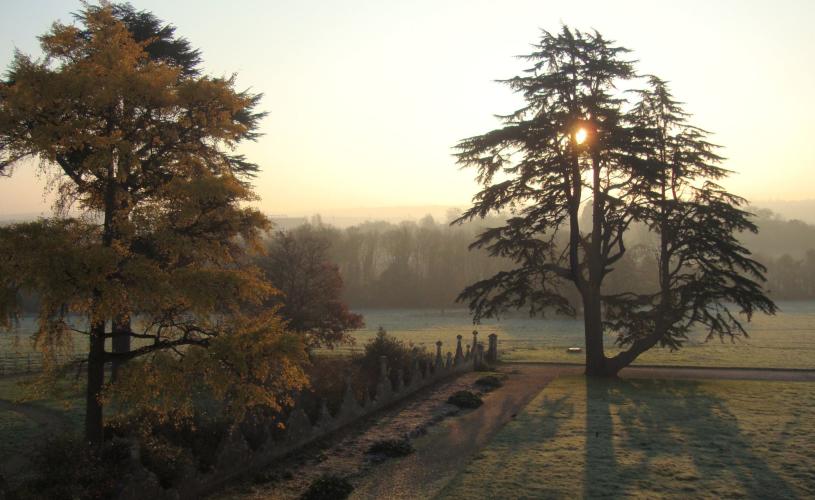
Image - Sunrise at Ashton Court Estate
The history of the deer
A beloved feature at the Ashton Court Estate is the deer park. Deer have been at the park for the last 600 years, meaning the deer park is one of the oldest in the country. The two parks are currently home to around 200 red and fallow deer.
Thomas de Lyons, a nobleman from France, introduced the deer in 1393. He had to get permission, in the form of a license, from King Richard II to create the deer park. Deer parks were historically used for hunting as well as food, and were a symbol of wealth as they were costly.
Many photographers have been able to catch some gorgeous photos of the Ashton Court deer. Why not try having a go next time you visit? Just make sure to follow the guidelines on the Bristol City Council website.
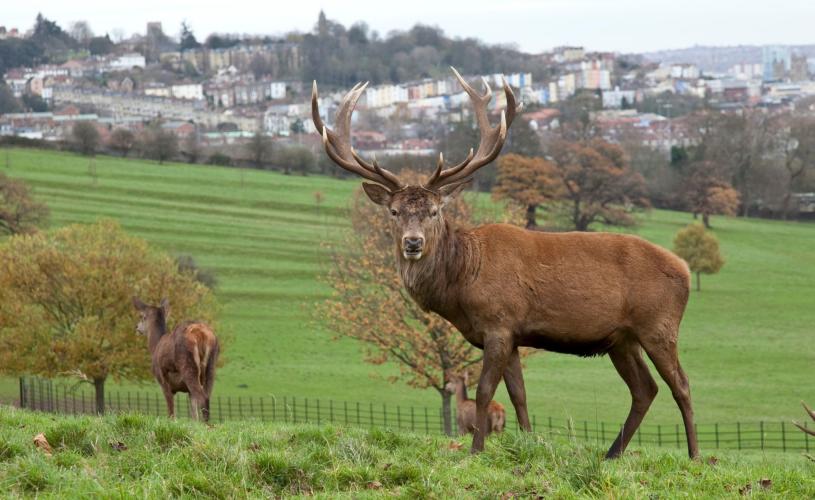
Image - Red deer at Ashton Court Estate. © Bristol City Council
The Domesday Oak
Among the ancient trees at Ashton Court, one is particularly famous. The Domesday Oak, which is over 700 years old. This tree was featured in the 50 British Trees in 2002 to celebrate the Queen’s Golden Jubilee. Sadly, it has become damaged and is no longer at its original height.
The park today
One of the most famous events that takes place at Ashton Court Estate in August is the Bristol International Balloon Fiesta. This has become one of Bristol’s most popular tourist attractions and is an opportunity to see over 100 hot air balloons ascend into the sky. It began in September 1979, and in the first-ever Fiesta, only 27 balloons took flight.
Ashton Court has many different woodland areas for you to explore. City Council has provided 3 different walks, which include helpful maps and more historical facts. Visit their website to download the walks and to learn more about the various activities that take place.
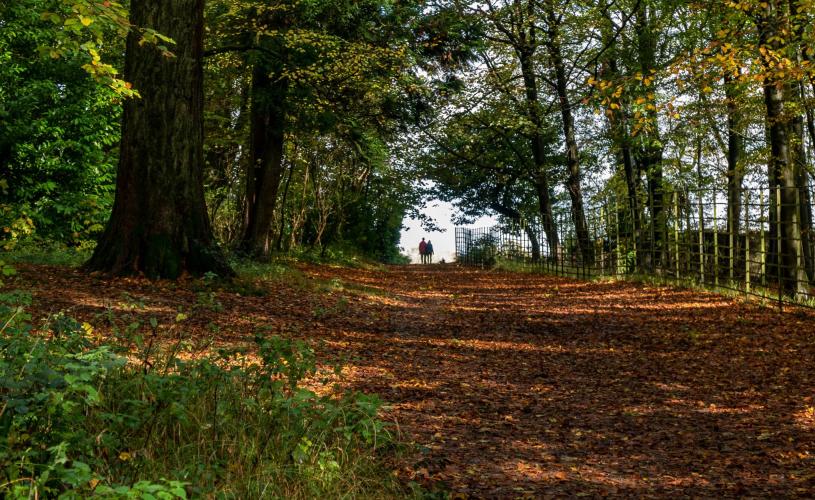
Image - Ashton Court Estate. © Bristol City Council
Read more:





